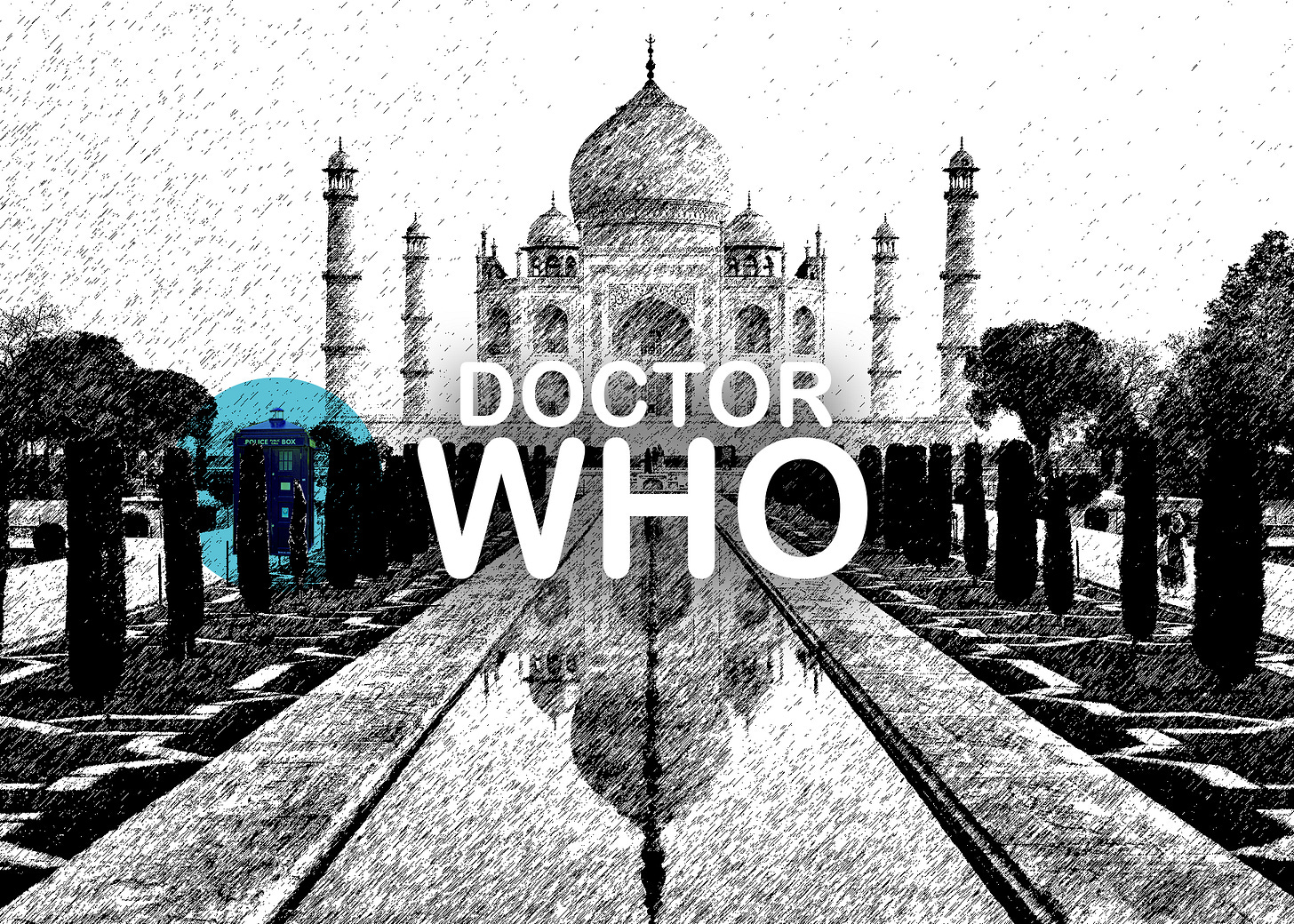An occasional series looking at popular stories of Doctor Who, a peculiarly British kind of TV hero, and the cultural contexts that influenced the ever changing character and his stories.
The Doctor Who story The Caves of Androzani, the last to star Peter Davison in the lead role, essentially drops the Doctor into the plot of Frank Herbert’s classic sci-fi novel Dune. The titular desert planet, Androzani Minor, is the source of a highly valued substance, ‘Spectrox’, produced by the indigenous bats; it prolongs life in humans but is poisonous when unrefined. The production of Spectrox has been halted by terrorist leader Sharaz Jek and his indefatigable army of androids, so the ruling corporate conglomerate of Androzani Major has sent in the army to defeat him.
Meanwhile, in Frank Herbert’s book, the planet is actually called Arrakis but is nicknamed Dune because it is entirely covered by desert. It is the only source in the galaxy of Spice, a highly valued substance that prolongs life, produced by great sandworms that swim in the deep desert. Production of Spice has been halted by terrorist leader Muad'Dib and his indefatigable army of native Fremen, so the ruling corporate conglomerate of CHOAM has demanded the Emperor of the Galaxy send in his army to defeat them.
Possibly not entirely incidentally, David Lynch’s film adaptation of Dune was also released in 1984. Dune is not ‘so bad it’s good’; it is so bad and so good in equal measure, a quantum superposition of quality. Lynch famously hated working on it, and after shooting was finished it was hacked about by the producers to such an extent that they had to add a voiceover at the start summarising the story, during which the narrator actually forgets a couple of key points and has to come back again to clear them up.
It is full of cringingly awful things, like the homophobic portrayal of the villain and Sting’s rubber underpants; and deliriously wonderful things, like Brad Dourif’s unhinged performance and Patrick Stewart charging into battle cradling a pug. It is stuffed with undigested gobbets of Herbert’s ludicrous sci-fi folderol and glorious Lynchian visuals. It is one of the few space operas that actually looks like it was filmed on location in an alien civilisation, and it is cursed with an equally alien approach to storytelling.
It was certainly timely. Dune is, among other things, an allegory of the petrochemical industry, in which the control of valuable resources by Imperial and neo-Imperial powers has radicalised indigenous populations to the point where they can be inspired to launch - and Herbert uses the word - jihad. (Muad’Dib is the battle name of Paul Atreides, the scion of a noble house turned extremist; an Osama bin Laden avant la lettre.) Britain in 1984 had been subject to a bombing campaign by Libyan religious and political radicals, culminating in the murder of P.C. Yvonne Fletcher; the legacy of a tangled Imperial history of mucking about in the Middle East.
Empire and its legacy were everywhere in the media of 1984, most particularly the British Raj in India. Jewel in the Crown was on TV and A Passage to India (and a re-release of Disney’s The Jungle Book, of all things) were in the cinema.
Keep reading with a 7-day free trial
Subscribe to The Metropolitan to keep reading this post and get 7 days of free access to the full post archives.



